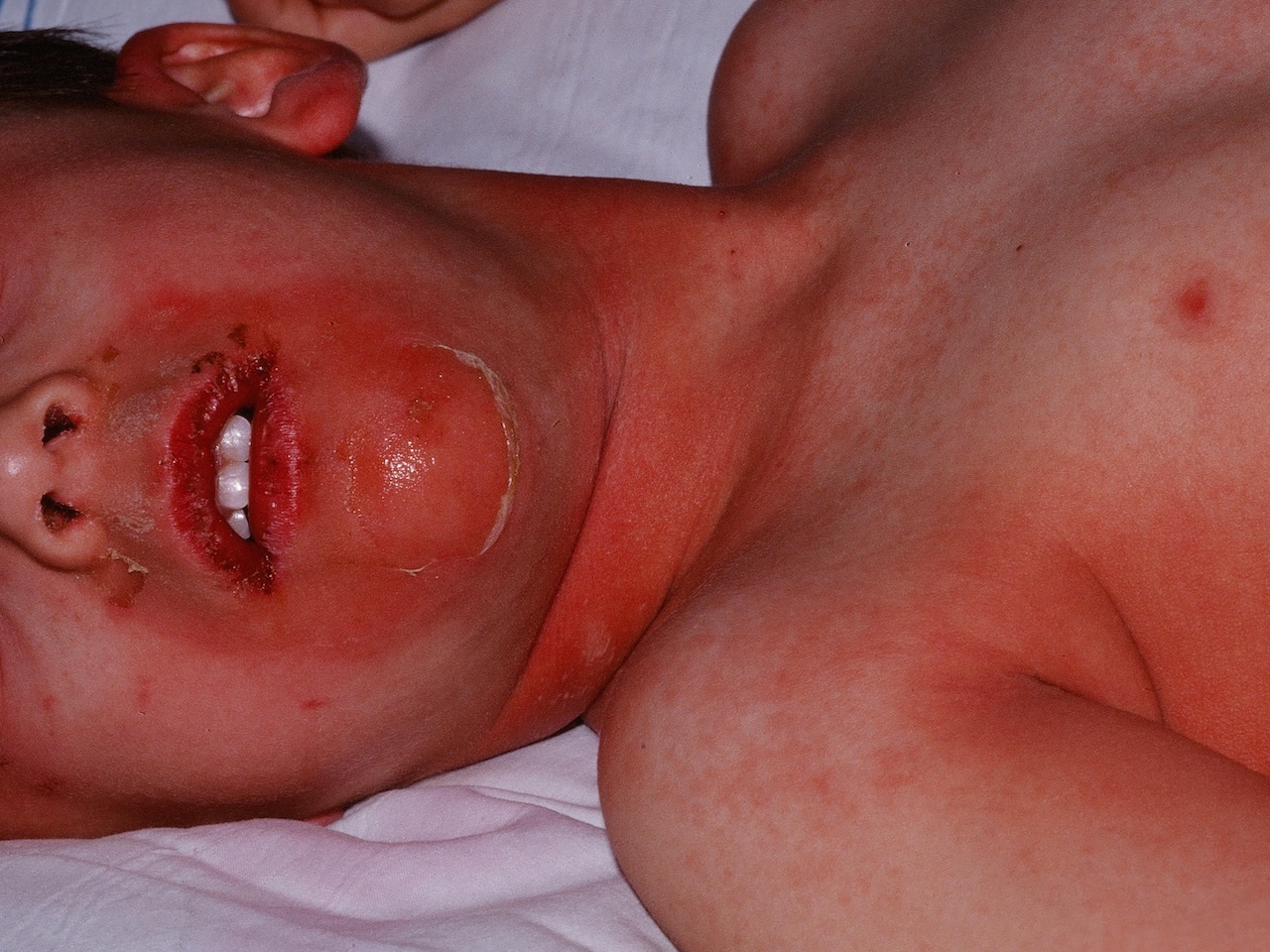
Erythematous, red skin often with peeling erosions about the mouth, neck and axilla is typical.
STAPHYLOCOCCAL SCALDED SKIN SYNDROME
Staphylococcal scalded skin syndrome (SSSS) is a localized infection by coagulase-positive group II Staphylococcus aureus (especially strain 71) that causes diffuse skin changes mediated via the release of a toxin.
- In one study of 84 patients, the mean age was 3.1 (plus or minus 2.4) years. About a third of the patients had a history of fever. 42% had an upper respiratory tract infection in the 2 weeks preceding the SSSS diagnosis. Pain and skin tenderness were experienced by most.
- Drug-induced epidermal necrolysis (DEN) should be excluded.
- One study showed that Staphylococcus aureus cultured from the skin was non-toxin producing in 69% of cases. Thus, the true offending Staphylococcus was somewhere else in the body. Thus, the correct diagnosis is based upon the clinical picture rather than laboratory studies.
- The target for the toxins has been identified as desmoglein-1, a desmosomal glycoprotein which plays an important role in maintaining cell-to-cell adhesion in the superficial epidermis. The toxin cleaves the extracellular domain of desmoglein-1, resulting in disruption of intercellular adhesion and formation of superficial blisters.
Clinical
The face is often covered with crust like an impetigo pie. A very superficial and thin layer of the skin may slough off. This is particularly common about the mouth, on the neck, and axilla. Thin-walled bulla may form. Nikolsky sign is positive.
RegionalDerm
Homepage | Who is Dr. White? | Privacy Policy | FAQs | Use of Images | Contact Dr. White
It is not the intention of RegionalDerm.com to provide specific medical advice, diagnosis or treatment. RegionalDerm.com only intends to provide users with information regarding various medical conditions for educational purposes and will not provide specific medical advice. Information on RegionalDerm.com is not intended as a substitute for seeking medical treatment and you should always seek the advice of a qualified healthcare provider for diagnosis and for answers to your individual questions. Information contained on RegionalDerm.com should never cause you to disregard professional medical advice or delay seeking treatment. If you live in the United States and believe you are having a medical emergency call 911 immediately.

